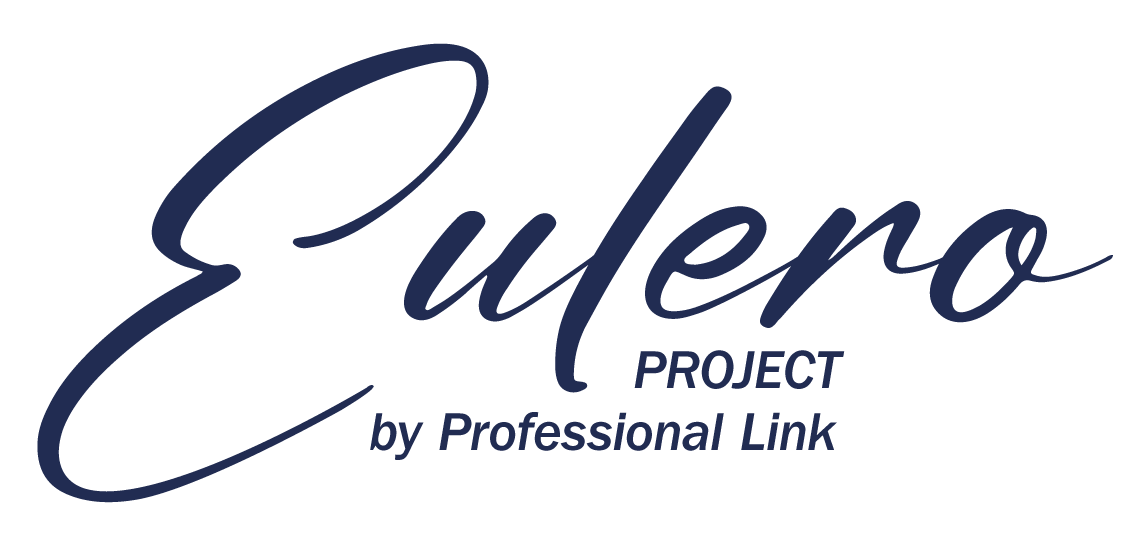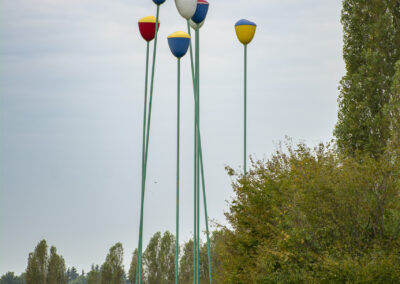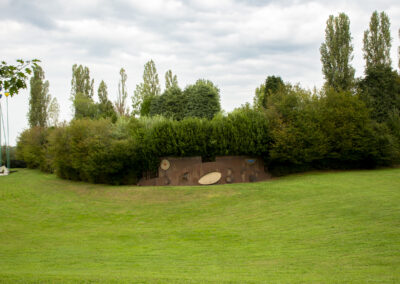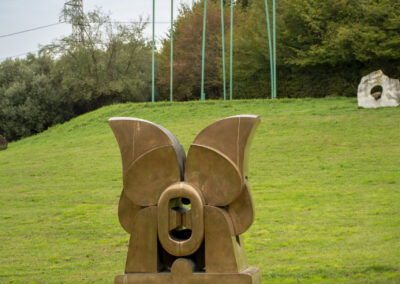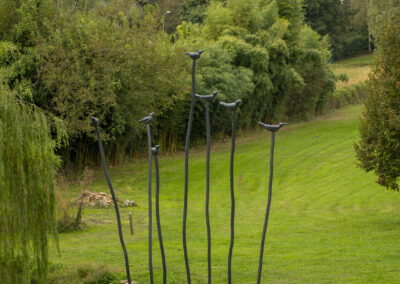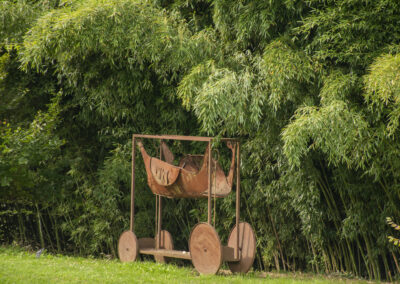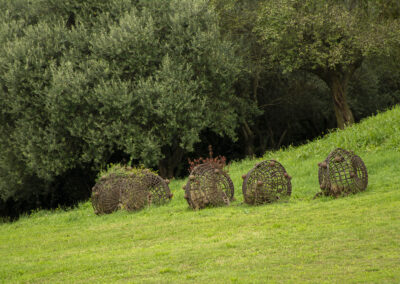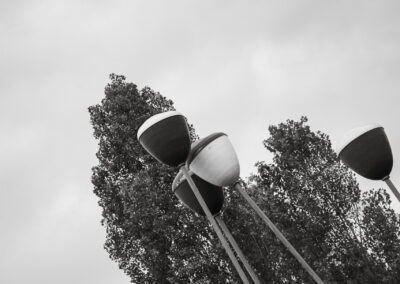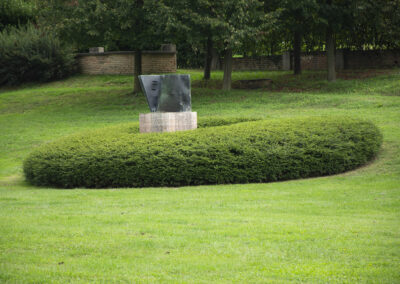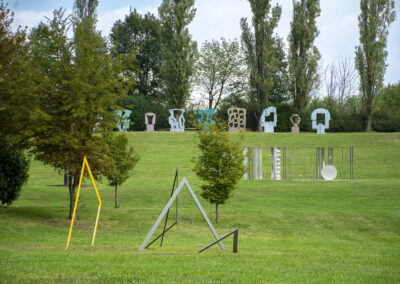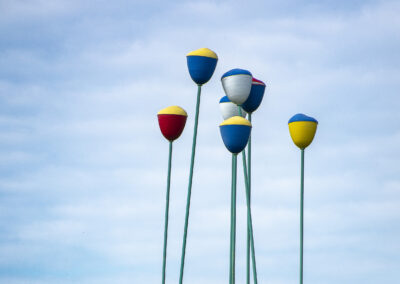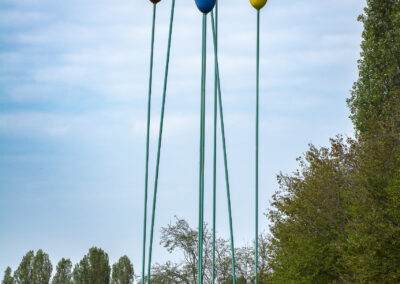Rossini Art Site
An “artistic” team building experience
The “artistic” team building experience
During the activity, the collaborators were divided into small groups. In turn, each was blindfolded and accompanied by the other members of the group to one of the sculptures in the park. Here, the colleagues described the work to those who could not see it, also trying to give an interpretation of its meaning and helping in a tactile exploration of it.
The blindfolded person then tried to draw the work based on the descriptions and tactile exploration. Once finished, we moved on to the next colleague, moving to a new installation. Every time a new stop was made, the site operators explained the story and meaning of the works previously explored.


Value of openness
Professional Link has eleven founding values that we try to cultivate every day in our work, but also in specific activities. Openness is one of these values, which was also cultivated during this team building exercise.
This “artistic” team building activity helped us work on the value of openness from both a mental and sensorial point of view. In fact, the participants experienced the works of art using senses other than sight and relied on the guidance of their colleagues (not their usual desk mates, but colleagues from other departments). Each participant did their best to make sure that the blindfolded colleague felt comfortable, which in turn fostered trust.
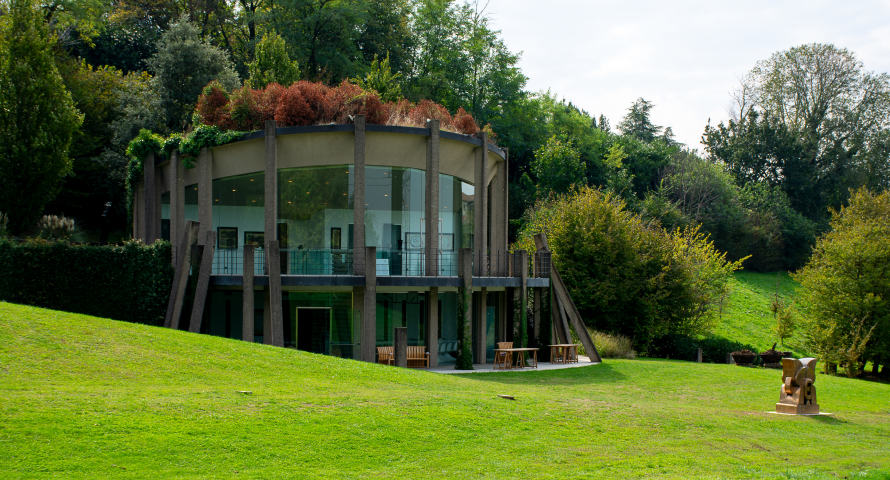
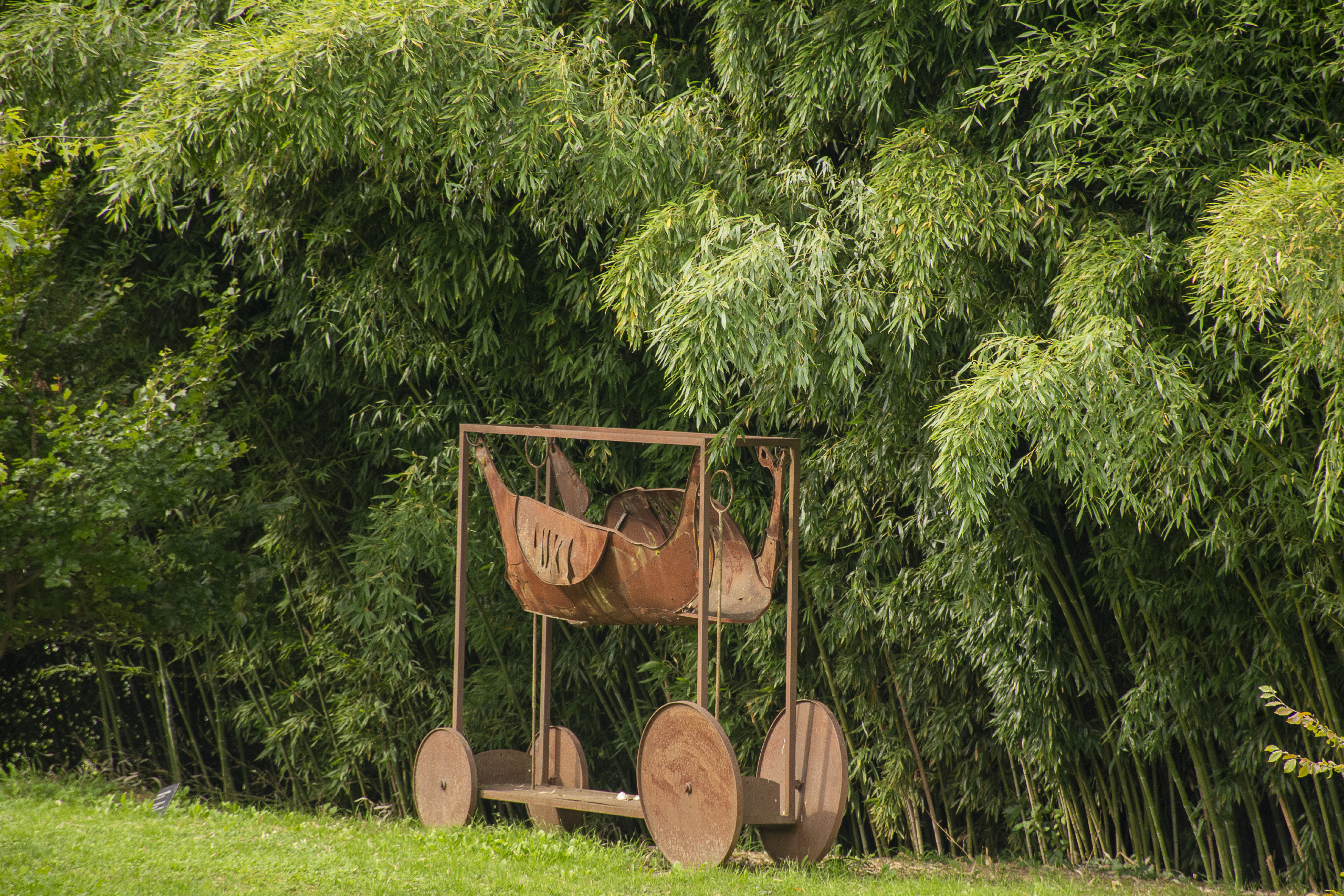

The Rossini Art Site tells the story of a man and his family.
This man is my father Alberto. Born between two wars, part of that generation that faced the task of rebuilding, that endured hardships but also embraced rebirth with enthusiasm.
“Enthusiasm” is one of those words that best describe my father. He was capable of pouring all his energy into his work and his company, but at the same time developing multiple interests, especially for art. Specifically, he was interested in the contemporary.
For Alberto, contemporary art was not just about acquiring or collecting works. For my father, art was a world to immerse oneself in, fascinating and stimulating. In our house, commissioned by the architect Gianfranco Frattini, in the hills of the upper Brianza, artists and exponents of culture alternated continuously, warmly hosted with the great support of my mother Luisa, in an always confidential atmosphere.
In those unforgettable years, great collaborations and great projects were born:
The Suite Milanaise by César, the monumental scale production of works by great friends Consagra and Cascella, the feat of creating in less than a month the maquette for the Venice Architecture Biennale with Fuksas, the mammoth Tulipani with the lifelong friend Franz Stàhler, who lived in our house for years.
For my father these challenges were the joy of living and the way to keep at bay a pain impossible to erase. That was the premature death of our brother Pietro, to whom the Pavilion designed by James Wines of the SITE studio in New York was dedicated. Wines is an architect who has a strong sensitivity and ability to dialogue with nature and the surrounding greenery. In this he had a great affinity with my father, so tied to the countryside, a lover of plants and animals.
My brother Matteo and I will always be grateful to him, for everything he taught us and left us, but above all for the love he poured out on his grandchildren. This was his greatest asset and who, after all, he always thought about while shaping this space.
It is for this reason that the place is a whole: the large collection of works cannot be separated from either the Wine Pavilion or the hill with its landscapes and the small lake. All this makes sense in Together, a place that is unique to us, but that my father never kept for exclusive use, but always open to the pleasure of showing it to anyone who was interested.
Today, from our time and beyond our respective professions, I, my brother, my mother, our wives and children always try to dedicate energy to trying to keep that spirit alive, in the hope that this place will remain over time a small trace of culture and that it will allow anyone who wants to come into contact with it, to interpret it and appreciate it.”
Tratto da: www.rossiniartsite.com





